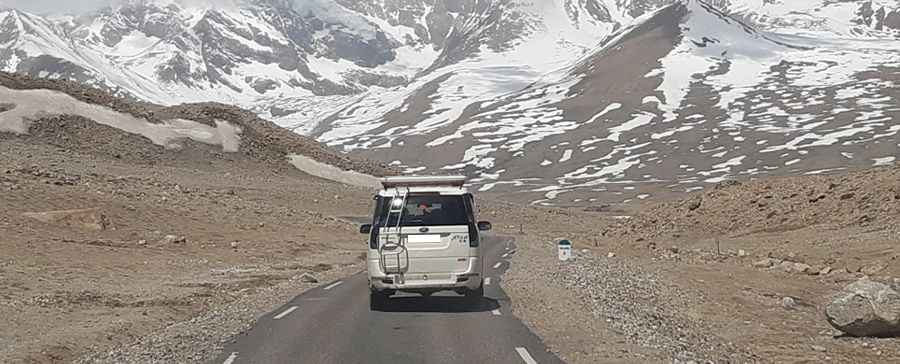A paved road to the glacial Gurudongmar Lake
Gurudongmar Lake is a high mountain glacial lake at an elevation of 5,154 m (16,909 ft) above sea level, located in the Indian state of Sikkim. It’s one of the highest roads in the country.

Where is Gurudongmar Lake?
The lake is situated 190 km north of Gangtok and 67 km from Lachen, in the northeastern part of the country, near the Chinese border.
Why is Gurudongmar Lake Famous?
It’s one of the highest lakes in the world. This beautiful glacial lake, also known as Chho Lhamo, Cholamu Lake, or Cholamoo Lake, completely freezes in winter. It’s encircled by snow-covered mountains and located to the north of the Kangchengyao range, offering breathtaking scenic beauty.
Why is it Called Gurudongmar Lake?
The lake is named after Guru Padmasambhava, also known as Guru Rinpoche, the founder of Tibetan Buddhism, who visited in the 8th century. It’s considered sacred by Buddhists, Hindus, and Sikhs.
Is the Road to Gurudongmar Lake Paved?
The road to the lake was recently paved and is called Gurudongmar Road. It spans 91.4 km (56.79 miles), starting from Chungthang, a town in the Mangan district. Extreme caution is required due to the high elevation.
Is the Road to Gurudongmar Lake Open?
The road is usually impassable in winter due to heavy snowfall. While Indian tourists are allowed to visit the lake, foreigners need to obtain a special permit from the Ministry of Home Affairs in Delhi. The ride is quite remote, so you must be well-prepared. Food is not readily available nearby, so ensure you're well-stocked.
Pic: GAUTAM SARKAR